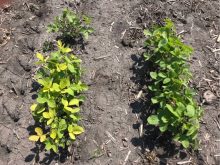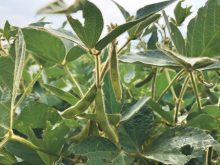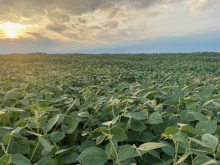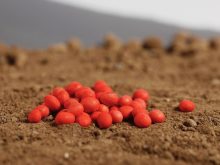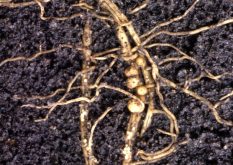Inoculating, or even double inoculating, is routine for pulse growers. But is it always necessary, or are their situations where farmers can save a few bucks without affecting yields?
The answer, it seems, comes down to crop type and field history.
Peas, fababeans and lentils all form symbiotic relationships with the same rhizobium species, and that species is native to Prairie soils. That means there’s a chance pea and fababeans will be inoculated by the native rhizobium, says Laryssa Grenkow, research manager for the Manitoba Pulse and Soybean Growers.
Read Also
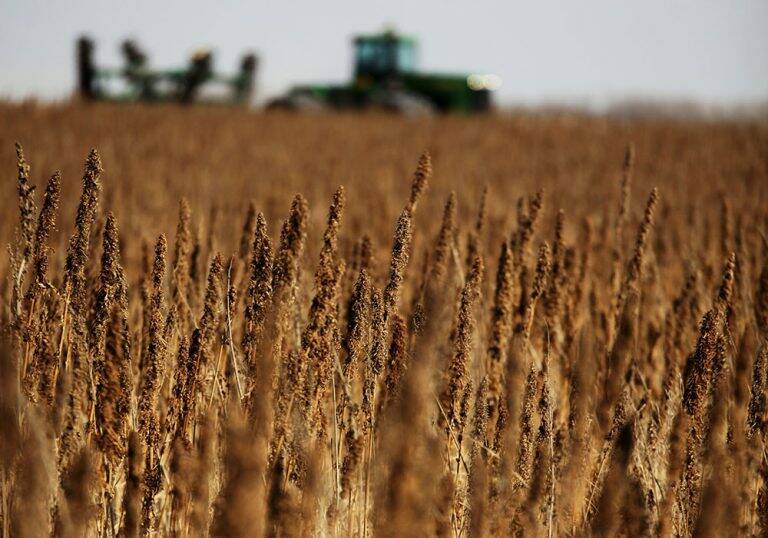
Hemp’s future hinges on honest agronomy, experts say
Years of hype have given way to a more realistic view of hemp. Canadian farmers and processors say its future depends on solid agronomy and honest messaging.
“That being said, supplemental inoculation often increases nodulation and nitrogen fixation and yield,” says Grenkow. Research out of Saskatchewan shows that pea growers who inoculate will see a yield increase about half the time, Grenkow says. Fields that haven’t seen peas have a higher chance of seeing a yield benefit, she adds.
“It’s hard to predict, especially when rhizobium are native to the soil. But the inoculant strains that are found in inoculant might be better at nitrogen fixation than some of the native rhizobium.” Grenkow says it’s “a good bet” to inoculate field peas every year, given the relatively small cost of inoculation.
Grenkow is more hesitant to recommend double inoculation in field peas, but she doesn’t rule it out entirely.

“There might be some extremely stressful soil conditions, especially when you’re seeding peas really early in the growing season that might reduce the viability of your inoculant.” In those circumstances, double inoculation might yield benefits, she says, but she hasn’t seen research to back it up.
Peas do respond more favourably to granular inoculant than peat or liquid, Grenkow says. Granular inoculant can be used on its own or as part of a double inoculation.
“If we’re looking for a formulation that is robust under different environmental conditions, granular would be your best choice,” says Grenkow.
The jury is still out on fababeans inoculation, but Grenkow says research is underway in Saskatchewan. Researchers are looking at inoculation rates, formulation, and single vs. double inoculation. Grenkow expects to see some results within a couple of years.
When to skip the double inoculation in soybeans
Manitoba Pulse recommends double inoculation for soybeans when seeding into fields with little or no history of soybeans. Research in Manitoba shows a 10 bushel per acre yield gain, plus protein gains, compared to an untreated check in field with no soybean history.
But farmers seeding into fields that have seen soybeans may be able to switch to a single inoculation. Before skipping that second inoculation, farms should make sure fields meet all of the criteria:
- Two or more previous soybean crops;
- Previous soybean crops nodulated well;
- At least one soybean crop has been grown within the last four years; and,
- No significant flooding or drought.
Manitoba Pulse’s recommendation is based on a three-year study looking at soybean inoculation in 25 replicated on-farm sites. The grower group only saw an economic yield from double inoculation in two of the sites, all of which were in eastern Manitoba.
Dry beans are a different beast altogether. While there are inoculants registered for dry beans, Grenkow says they’re not widely available because most producers don’t use them. “Dry beans are really poor at fixing nitrogen compared to other legumes.”
Grenkow says dry beans need between 60 and 90 lbs of nitrogen per acre, taking into account soil nitrogen and fertilizer. Farmers can adjust those rates based on row spacing systems. Wider rows are used so farmers can cultivate between rows to control weeds.
“And because you’re cultivating through the season, you’re going to be mineralizing more soil nitrogen. So you can reduce your nitrogen rates by approximately half,” says Grenkow. Farmers can find rates in Manitoba’s Soil Fertility Guide.
Dry beans have very shallow root systems so Grenkow recommends applying nitrogen in the spring instead of the fall to prevent leaching.
Share the knowledge
How much agronomic information can be swapped between provinces depends on the crop. For example, fababeans and pea recommendations between Saskatchewan and Manitoba are applicable for the most part, Grenkow says.
But Grenkow doesn’t think dry bean growers in Manitoba and Alberta swap much information. Manitobans tend to look south to North Dakota for interchanging recommendations.
“We like to validate our recommendations here, and we’ve started doing that for things like seeding rates for dry beans,” Grenkow says.
Grenkow thinks they’ll be looking at the nitrogen rates again, as that work was done several years ago, and they want to make sure nitrogen recommendations are still on-track.
Do you have other questions about pulse production?
The Manitoba Pulse and Soybean Growers have developed an app to help soybean and dry bean growers with decisions around seeding rate and fungicide applications. Download it from your app store by searching “Bean App.”
For more info on the app, visit manitobapulse.ca.





